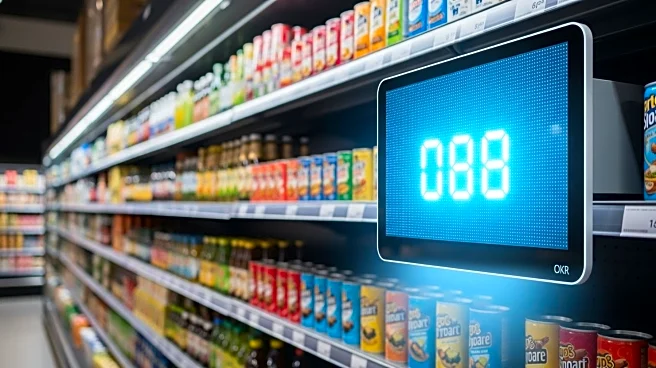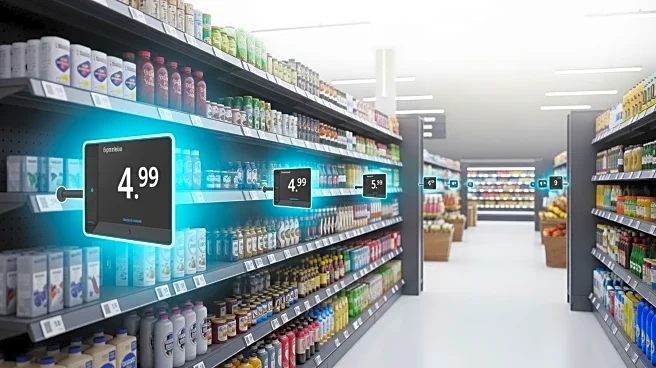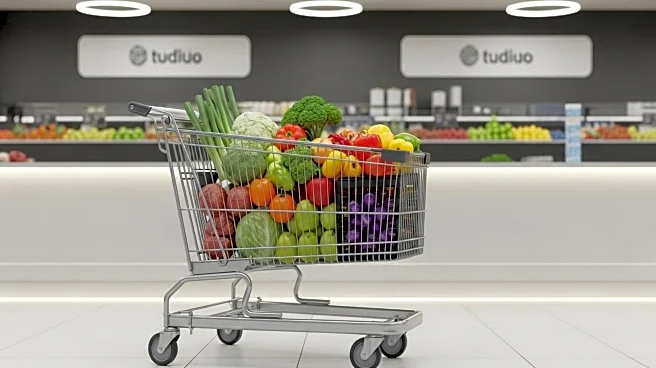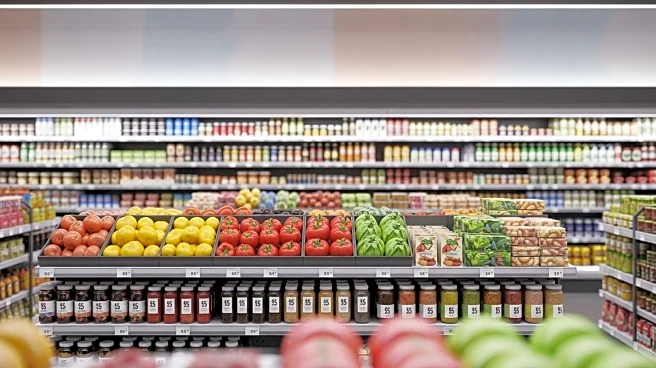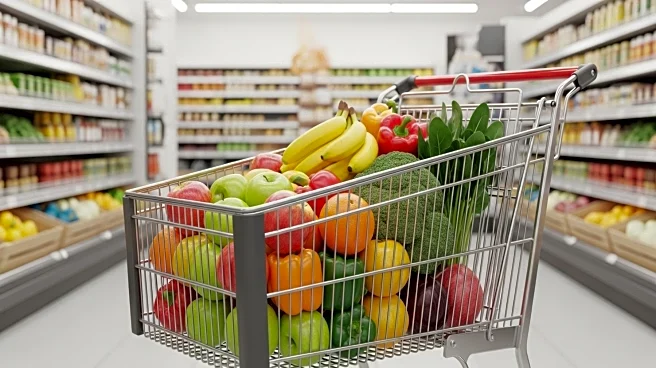What is the story about?
What's Happening?
Electronic shelf labels are increasingly being adopted by grocery stores across the United States, replacing traditional paper price tags. This technology is already in use at major retailers like Whole Foods, Amazon Fresh, and Kroger. The global market for electronic shelf labels is projected to grow significantly, from $1.85 billion in 2024 to $7.54 billion by 2033. The technology allows for rapid price updates via mobile apps, reducing the time required for price changes from days to minutes. However, there are concerns about potential price manipulation during high demand periods, although retailers like Kroger have denied engaging in surge pricing.
Why It's Important?
The adoption of electronic shelf labels represents a significant shift in the retail industry, offering operational efficiencies and potential cost savings. For consumers, this technology could lead to more dynamic pricing models, potentially affecting shopping habits and perceptions of value. While some lawmakers express concerns about price manipulation, studies suggest that dynamic pricing can reduce food waste and improve inventory management. The broader impact on the retail sector includes increased competition and the need for transparency in pricing strategies to maintain consumer trust.
Beyond the Headlines
The implementation of electronic shelf labels raises ethical and regulatory questions about pricing transparency and consumer protection. As the technology becomes more widespread, there may be calls for regulatory oversight to ensure fair pricing practices. Additionally, the shift towards digital pricing could influence consumer behavior, as shoppers become more accustomed to fluctuating prices based on demand and other factors. The long-term implications for the retail industry include potential changes in pricing strategies and the need for retailers to balance operational efficiencies with consumer trust.
AI Generated Content
Do you find this article useful?
